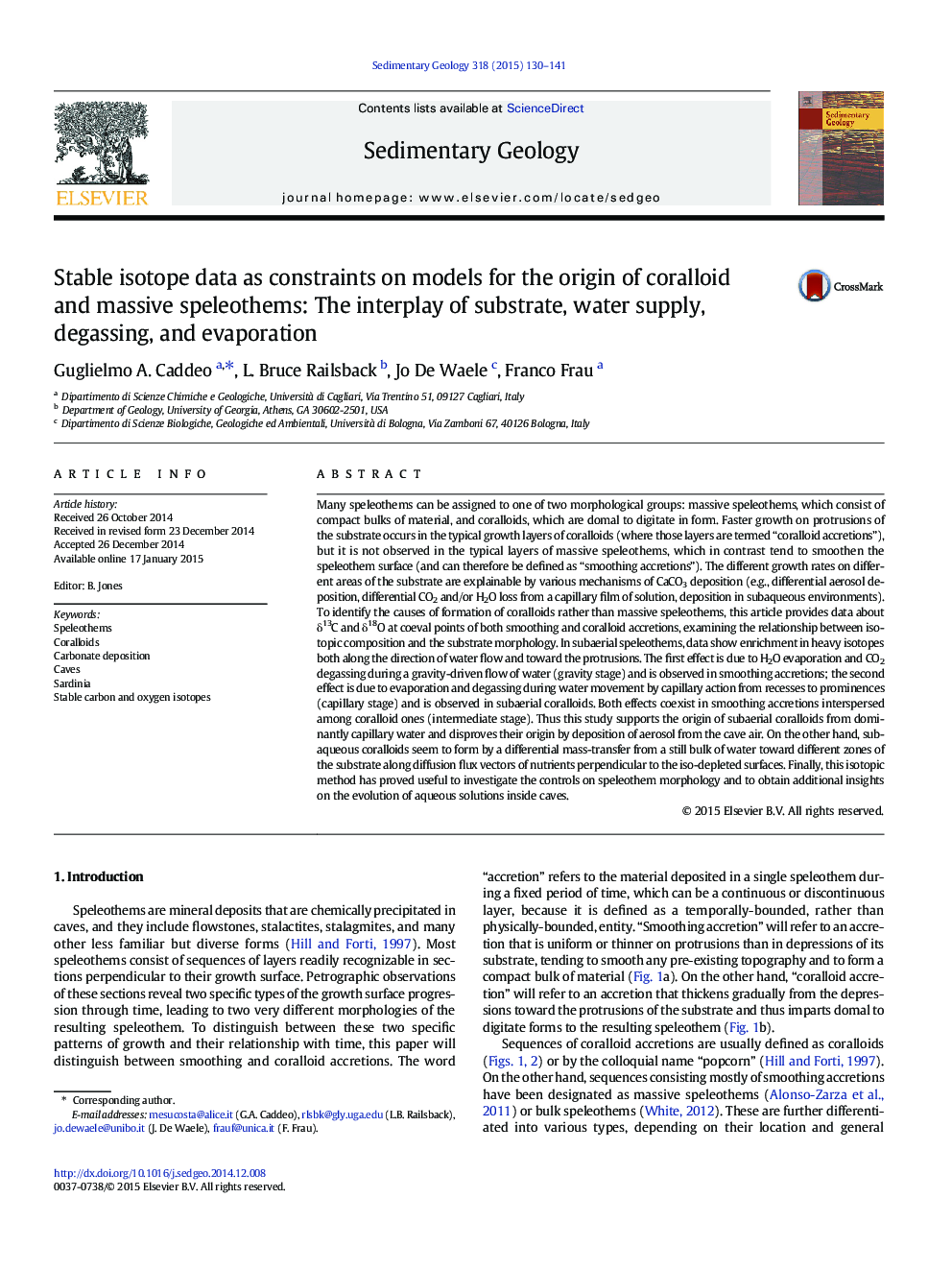| کد مقاله | کد نشریه | سال انتشار | مقاله انگلیسی | نسخه تمام متن |
|---|---|---|---|---|
| 4689276 | 1636045 | 2015 | 12 صفحه PDF | دانلود رایگان |
Many speleothems can be assigned to one of two morphological groups: massive speleothems, which consist of compact bulks of material, and coralloids, which are domal to digitate in form. Faster growth on protrusions of the substrate occurs in the typical growth layers of coralloids (where those layers are termed “coralloid accretions”), but it is not observed in the typical layers of massive speleothems, which in contrast tend to smoothen the speleothem surface (and can therefore be defined as “smoothing accretions”). The different growth rates on different areas of the substrate are explainable by various mechanisms of CaCO3 deposition (e.g., differential aerosol deposition, differential CO2 and/or H2O loss from a capillary film of solution, deposition in subaqueous environments). To identify the causes of formation of coralloids rather than massive speleothems, this article provides data about δ13C and δ18O at coeval points of both smoothing and coralloid accretions, examining the relationship between isotopic composition and the substrate morphology. In subaerial speleothems, data show enrichment in heavy isotopes both along the direction of water flow and toward the protrusions. The first effect is due to H2O evaporation and CO2 degassing during a gravity-driven flow of water (gravity stage) and is observed in smoothing accretions; the second effect is due to evaporation and degassing during water movement by capillary action from recesses to prominences (capillary stage) and is observed in subaerial coralloids. Both effects coexist in smoothing accretions interspersed among coralloid ones (intermediate stage). Thus this study supports the origin of subaerial coralloids from dominantly capillary water and disproves their origin by deposition of aerosol from the cave air. On the other hand, subaqueous coralloids seem to form by a differential mass-transfer from a still bulk of water toward different zones of the substrate along diffusion flux vectors of nutrients perpendicular to the iso-depleted surfaces. Finally, this isotopic method has proved useful to investigate the controls on speleothem morphology and to obtain additional insights on the evolution of aqueous solutions inside caves.
Journal: Sedimentary Geology - Volume 318, 1 April 2015, Pages 130–141
